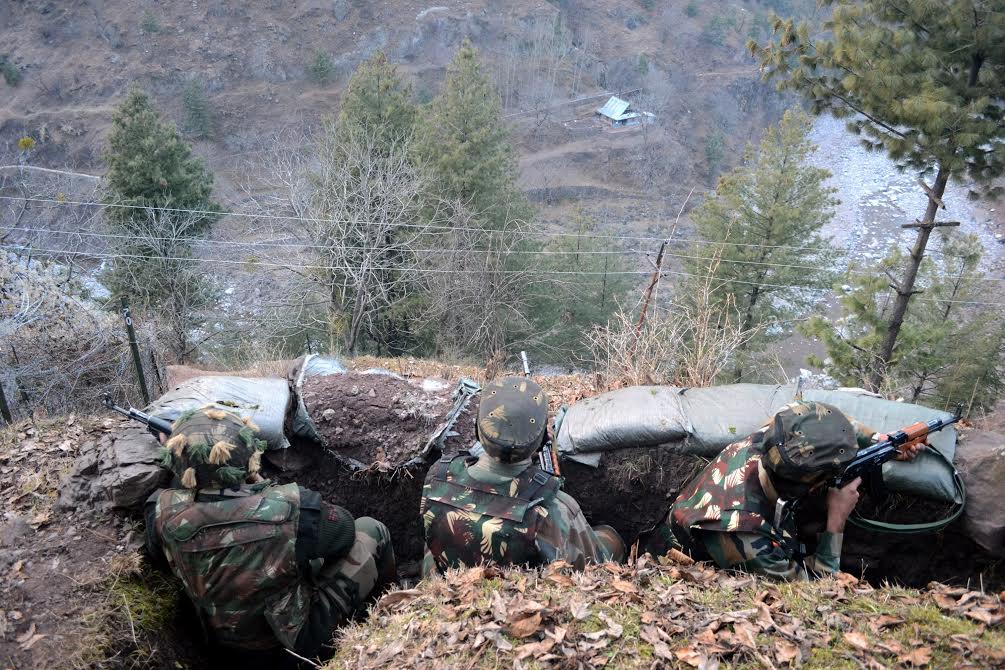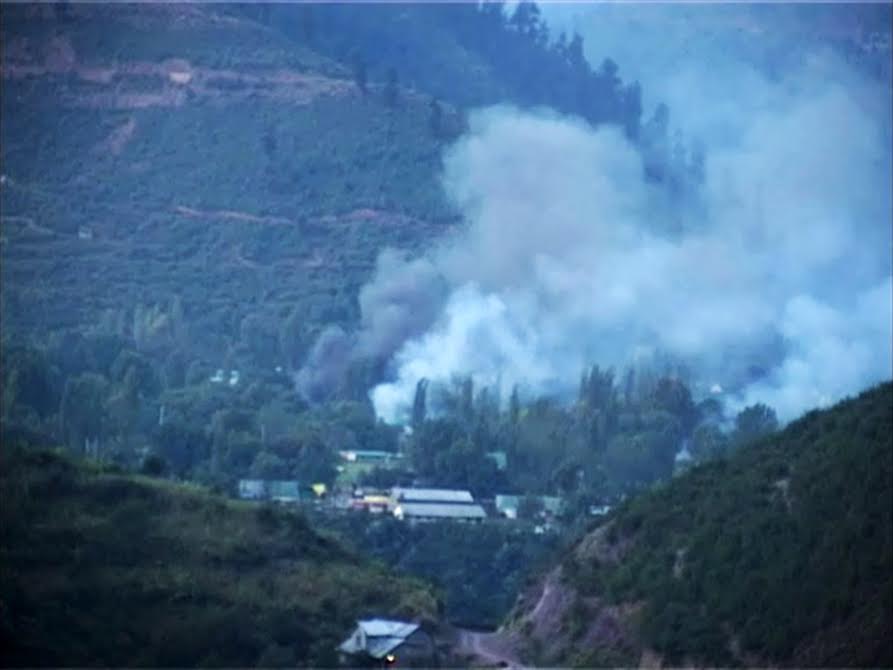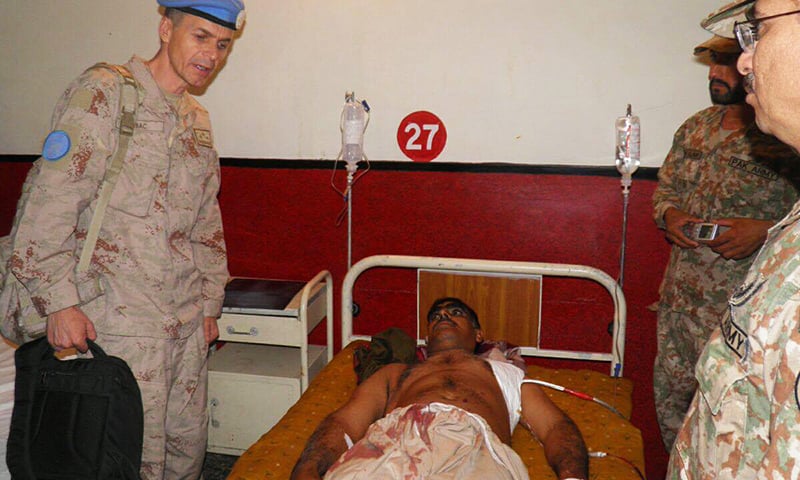by Masood Hussain

Till last month, the only priority for the state government was to break the killing-protest-killing cycle. In security meetings, there is lot of emphasis on the ‘maximum restraint’ that security grid should observe especially on Fridays to avoid casualties. After thousands of arrests in hundreds of raids, somehow this objective was almost achieved in Kashmir plains. This is despite the happenings in Ruhmoo (Pulwama) and Anchar (Srinagar).
But a parallel cycle has started at LoC and the International Border. The rival armies are fighting literally a war and it is consuming civilians on either side of the Kashmir divide. More than 22 civilians perished in the artillery duels between the rival armies in J&K and PaK, the two halves of erstwhile Kashmir. As armies fight on borders, diplomats use demarche against each other in the cosmopolitan capitals.
Poonch’s Mendhar-Balakot belt, Samba, and Keran-Karnah-Machil sector in Kashmir are the worst sufferers of the renewed hostilities.
November 1, was quite terrifying. After a woman Sultana and her daughter-in-law Maqboola died in a shell explosion in their fields at Panjgrain in Rajouri’s Balakote belt, Mendhar received shells in its main market, near the police station and the hospital. The belt witnessed destruction of various commercial spaces as a number of people, mostly women, are admitted in hospitals. Post-shelling, residents said getting injured to the hospitals was nightmarish.
Ramgarh belt witnessed a serious crisis as the Pakistani gunners targeted villages close to the zero line. Six persons including two infants and two women were killed as 22 were injured. The worst instance is that of Maru Ram, 65 who was accompanying his daughter Anju Devi, her two kids and his another grandchild to safety at the peak of shelling. A shell landed in the fields killing the two minor boys and his daughter and soon he also himself died in the hospital. The only survival was Pari, a 14-month-old baby currently recuperating in the hospital after a long surgery.
As thousands of people rushed out to safety, authorities are facing a serious crisis to arrange their housing. They have already closed 174 schools in Jammu, 45 in Samba, 84 in Poonch, 30 in Rajouri and 62 in Kathua. Now the government is planning evacuating 37000 residents from nearly 50-villages.
Sheetal Nanda, Samba DC told reporters that Ramnagar villages Ragoor Camp and Jerda bore the maximum brunt of shelling. For housing nearly 25000 people living in shelling prone 58 hamlets, her administration has set up 18 transit camps. Almost 10,000 people have already fled from their 15 villages in Arnia and R S Pora, according to Simrandeep Singh, DC Jammu.

Similarly, the Neelum valley of PaK, facing Keran-Karnah got involved for the first time in last 13 years when the shells landed in one of its tourist resorts. “It’s the first time since the 2003 ceasefire agreement that BSF is shelling tourist spots which is unbelievable,” Khawaja Awais, the guest-house owner in Neelam Valley whose two staffers and a guest survived injured in shelling told Express Tribune newspaper. “We were making arrangements for a tourist group of 150 people when a mortar shell landed on the lawns where the guests were supposed to have their lunch. A few minutes later another mortar barreled through the rooftop into the lobby.” He claimed 12 mortars landed in his guest house in 30 minutes.
Both sides are accusing each other of hitting civilian targets. Pakistan claims it lost 19 civilians as 80 survived injured in areas straddling LoC and IB, this season.

The crisis started with the attack on an army base in Uri which was quickly followed by “surgical strike”. The two countries started exchanging shells and the revenge factor induced the crisis. Recently when a body of a slain soldier was mutilated by the militants in Machil, working under fire cover from Pakistani gunners, it added a new unpredictability to the tense relationship of the rivals. The new in-thing in media coverage on the two sides of the divide is the number of each other’s bunkers they destroy. This is quite a risky situation. An accident could lead to a war.
Interestingly both sides are accusing each other of flouting the 2003 ceasefire agreement. Initiated by premier Vajpayee in November 2003, the ceasefire on the LoC was perhaps one of the major CBMs on Kashmir front. It changed lives of the LoC people. Some of them had permanently migrated leaving behind their lands and hearts. Some were stuck up into the dungeons where they saw no sunlight for years. Some villagers were crawling out of their villages during nights as they were under constant surveillance of the gunners from across.
With 2003 ceasefire, all these tragedies faded away as people returned home, resumed tilling the lands and restoring their homes. The 2005 earthquake that destroyed these belts led to official and societal intervention that eventually improved the living standards. Now they are back to the old days. The stand of the successive governments in Srinagar that the two countries will have to ensure peace at the LoC for a peaceful Kashmir is a larger reality that lacks enough ears in Islamabad and Delhi.

But there is one key element that the two sides must address. Both sides are accusing each other of attack. In fact the response to skirmishes is almost identical. For all these years there has not been anybody who would play an empire. UNMOGIP is posted in the region but since 1971, Delhi is not cooperating with it. This is unlike Islamabad that, last week, took UNMOGIP staffers to visit Kotli to inspect the civilian targets. Delhi’s stand is that there is no room for a third party as Shimla agreement made Kashmir a bilateral affair. So the two countries should invest in creating a bilateral mechanism to check their informal war on the LoC. J&K is hugely suffering because of the blazing guns.














